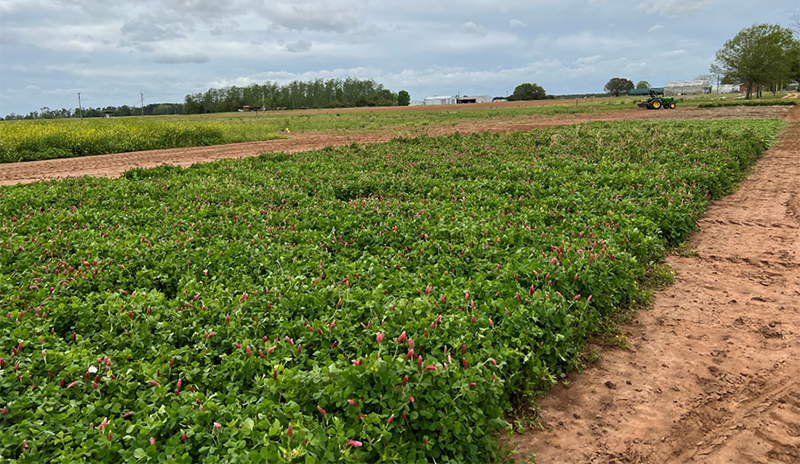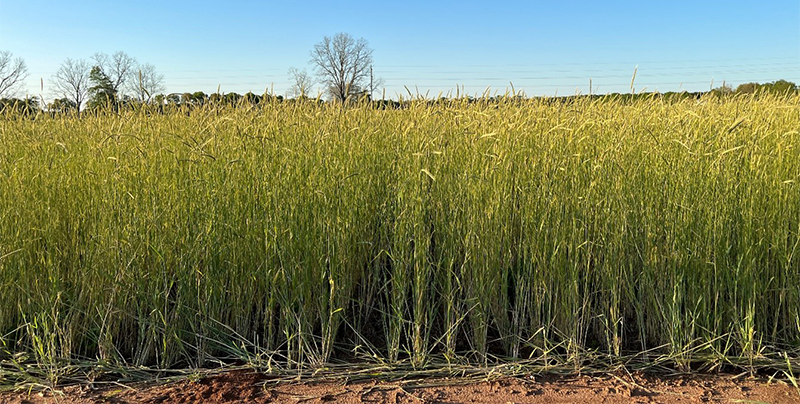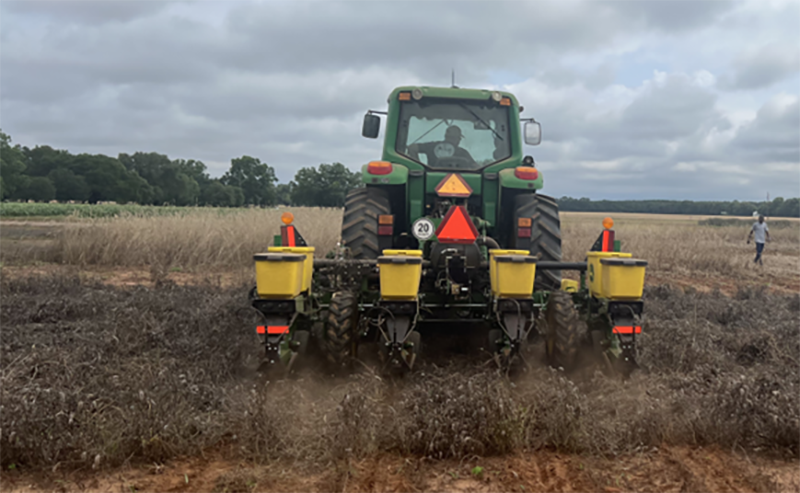Florida Best Management Practice (BMP) programs have increased use of cover crop technologies in the Florida Panhandle. Winter cover crops are crops planted in late summer or early fall to provide winter soil protection and ground cover or green manuring for subsequent summer crops. They include grasses, legumes, and brassicas that are adapted to cool temperatures and short days. Winter cover crops have been shown to provide numerous benefits to growers when compared to winter fallow. These benefits include a reduction in soil erosion and nutrient leaching, weed suppression, improvement of soil fertility, physical properties, and water conservation, resulting in a greater subsequent crop yield. Depending on the intended benefits, choosing the right winter cover crop is critical to successful cover cropping. Different categories of winter cover crops including grasses, legumes, or cover crop mixtures that are adapted to Florida’s climate and soil conditions, but a proper choice of winter cover crop is the first step in maximizing the benefits and minimizing potential problems.
Legume winter cover crops are often planted as green manure and generally have the potential to provide a thick mat of foliage, fix atmospheric nitrogen (N), scavenge N from the soil, and also return it after decomposition. Common legume cover crops grown in Florida include crimson clover, hairy vetch, lupine, and velvet bean. Legume winter cover crops initially have slower growth than grass cover crops and may produce less biomass, but they can contribute much of the N required for many summer crops. Figure 1 below demonstrates crimson clover grown as winter legume cover crop at UF/IFAS West Florida Research and Education Center, near Jay, Florida.

Figure 1: Crimson clover cover crop, at UF/IFAS West Florida Research and Education Center, Jay, FL. Credit: Yogendra Upadhyaya, UF/IFAS
–
Grass cover crops are most useful for scavenging nutrients, suppressing weeds, and providing both rain and wind erosion control. They can reduce available soil nitrogen early in the growing season; thus, they may serve as a net drain rather than a nitrogen contributor to the system. They also produce large amounts of residue that add organic matter to the soil. Common grass cover crops grown in Florida include rye, wheat, barley, oats, and triticale. Grass cover crops can be used in fields with excess nutrients, particularly nitrogen. Two or more winter cover crop species can be combined to achieve multiple benefits. The combination of two or more winter cover crop species can supply greater nitrogen, produce greater biomass, ground cover, soil water conservation, and weed suppression, and also attracts a wider range of beneficial insects than a pure stand of grass or legume winter cover crop. Figure 2 below demonstrates cereal rye grown as winter grass cover crop at UF/IFAS West Florida Research and Education Center, Jay.

Figure 2. Cereal rye cover crop, at UF/IFAS West Florida Research and Education Center, Jay, FL. Credit: Yogendra Upadhyaya, UF/IFAS
–
Multiple objectives can be realized by combining a grass cover crop with one or more legume cover crops, or using the different growth characteristics of multiple winter cover crop species to fit the grower’s needs. For example, when rye and crimson clover are planted in a mixture, rye can help to reduce nitrate leaching while the crimson clover can supply N to a subsequent summer crop. The combination of rye with barley, wheat, or triticale is another suitable mixture, because these cover species have similar heights, which minimizes shading effects among the species compared to the mixture of short crimson clover and tall rye.
Many regions around the world have demonstrated the benefits of no-till planting. When coupled with crop residue and crop rotation, these systems are known as “conservation agriculture.” Conservation agriculture is widely adopted in dryland or rain-fed farming systems, because it helps to conserve soil moisture. However, row crop producers in the Florida Panhandle region still utilize aggressive strip-till planting prior to planting, often tilling up one foot of a three-foot row, or one-third of the acreage, at planting. This decreases the benefits of cover crops as soil is still disturbed.
No-till planting is not a new technology. Influential research in the US demonstrated that combining no-till with soil cover reduced sediment delivery and runoff, both processes being responsible for nutrient loading to waterbodies. That work has been consistently demonstrated throughout the world, making no-till and ground cover two of the three pillars of conservation agriculture (the third being crop rotation). Mulch cover is critical to prevent soil crusting, which increases infiltration and soil moisture for summer crop use, reducing the need to drill more irrigation systems, thus depleting aquifers, while also limiting erosion. Coupling cover crops with no-till planting is the next step toward increased sustainability for Florida row crop producers in the Panhandle. These producers are responsible for approximately 200,000 acres of land with drainage basins leading to the Gulf of Mexico, as well as springs and impaired waterbodies. Cover crops reduce runoff, erosion, and nutrient loading to the environment by covering the soil, but aggressive strip-till operations reduce those benefits. We can do better by reducing tillage on our cover cropped acreage.

Figure 3. Not till planter used for cotton planting at UF/IFAS West Florida Research and Education Center, Jay, FL. Credit: Hardeep Singh, UF/IFAS
–
However, there is very limited adoption of no-tillage in row crop production systems in the Florida Panhandle. To demonstrate no-till row crop production to the producers in the region, we acquired a no till planter at UF/IFAS West Florida Research and Education Center, Jay, with financial support from Florida Department of Agriculture and Consumer Services. Figure 3 shows the John Deere no-till planter to be used for planting cotton in crimson clover residue. The purpose of this no-till planter is to have on farm demonstrations of no-till technology in the region. Thereby, producers interested in setting up this demonstration on their farm can contact their county agent or Hardeep Singh.
- Potential Winter Cover Crops and Best Management Practices - November 7, 2025
- Managing Peanut Vine Growth with Plant Growth Regulators - May 2, 2025
- Join the 2025 STEP Cotton Competition! - March 28, 2025
